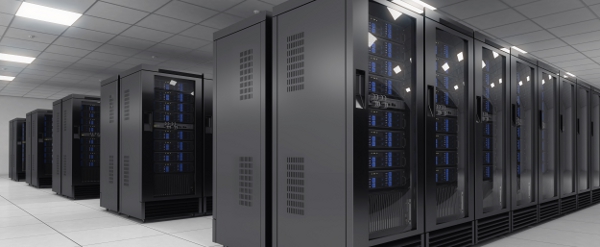
Dell set out its stall last month by announcing its support for the open-source network, widely hailed for offering customers more choice and flexibility in choosing the operating systems, networking equipment and network applications that best suit them.
The recently privatised firm hopes its fresh approach will disrupt the status quo of networking giants like Cisco, HP and Juniper Networks, and has already revealed its latest product, a networking switch powered by Cumulus Networks’ Linux-based OS.
The offering means customers can break free of vendor lock-in, with Dell claiming this will lower TCOs for companies by allowing them to pick and choose from the large ecosystem of Linux applications.
And Dominique Vanhamme, Dell’s EMEA head of networking, says the open-source approach is a direct result of the company’s decision to plump for the software-defined networking (SDN) approach, where there is no hardware tie-in for customers wanting to deploy Dell’s technology.
He explains: "We’re really pushing the envelope now. It’s SDN that allows us to be much more open standard-based compared to proprietary architecture where vendor lock-in is the norm."
Vanhamme spoke to CBR about the biggest trends we’re likely to see Dell exploring in 2014.
Virtualisation
Vanhamme thinks adoption of virtualisation will "creep" along, partly due to the sheer size of networks many enterprises are busy maintaining.
"I don’t think there will be a big bang change," he says. "Last year was an indication, we will see the adoption creeping across the networks. We saw 270,000 SDN capable ports sold globally. We see those being accumulated and we will see more use cases popping up."
And while virtualisation is a hot topic for the data centre, but Dell is betting on it hitting campus networks too – driven by the desire for mobile working and enabled by the new wireless standard 802.11ac, boasting faster speeds and longer ranges.
"We’ll see that just explode this year," Vanhamme confirms. "All of a sudden network administrators can offer them speeds of over one gigabit per second. Now think of all the devices that are connected: all the workforce now have on average three smart devices typically, instead of one. The days where the enterprise users were only having a workstation are gone and will be going away more so."
The Power of 10
But this new access speed, growth by ‘the power of 10’ as Dell’s marketing department is keen to tell us, will have repercussions in the network, warns Vanhamme.
It will trigger a whole bunch of upgrades necessary to accommodate the increased bandwidth, with the network coping with up to 10 times the amount of traffic.
"That paradigm shift in end user connectivity to wireless will trigger 10Gb upgrades. We believe that will be a significant factor of growth for us because we believe we have a significant advantage there against the competition.
"We’ve been always trying to be on that market and we expect the market to become really generalised in 2014."
However, those speeds are expected to grow even further – to 40Gb and even 100Gb.
As a result, companies will begin to future-proof their networks so that they can cope with these advances when they become widespread, believes Vanhamme.
Dell sees smaller companies whose core business models are intrinsically linked to their IT infrastructure will be the fastest to adapt in this space.
"You will indeed expect smaller companies to be much more agile and flexible in their network upgrades and that’s what we’ve been seeing," he says.
"Going to larger types of organisations, they have typically a significant in-store base. That kind of legacy they have is sometimes a burden when trying to evolve rapidly. But these big companies they still want to have the agility of their nearest five competitors. So the network administrator has to provide flexibility."
As a result, Dell is betting big on the functionality of its software that allows it to integrate with installed bases
Network security
With ever-increasing bandwidth bringing more traffic from more users with more devices, the best approach to security is having networks with built-in protection, according to Dell.
But Vanhamme admits it is a complex area for most companies. It’s not just about internal access anymore: you want to offer different levels of access to your network to third-parties, but you must keep it secure from hackers, too.
Vanhamme says: "The question becomes how do you offer an open infrastructure to the people who help raise business, while recognising that users are different and so giving them different levels of access to different parts of the applications?
"When you do this you have to make sure you encrypt and authorise that traffic, so authentication, encryption and authorisation are all types of functionalities we want to offer."
At the end of the day, it all comes back down to the open-source approach for Dell.
"We’re offering security with our own technology and with alliance partners," says Vanhamme. "We believe by being much more open you offer that in the end you offer more choice to customers, without vendor lock-in."






